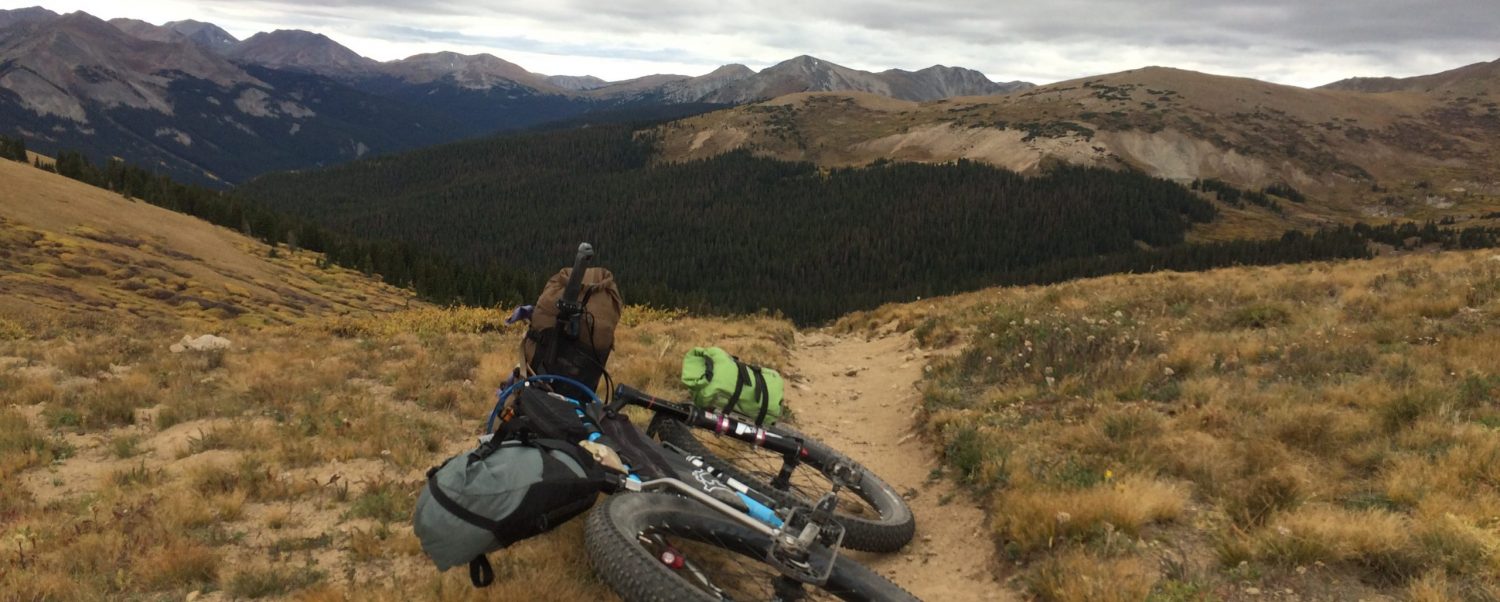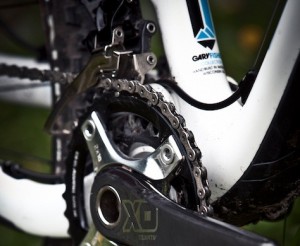I need to complain about something else really quick…
(it’s a rest-ish week since I’m heading out this afternoon for tomorrow’s Ouachita Challenge race, so I have nothing better to talk about)
Cable housing. Namely, cable housing on mountain and cyclocross bikes.
For those of you that are not mechanically informed on how your bike’s shifting works here’s a quick rundown: when you push on the shift lever (road or mountain), the shifter either pulls or releases an exact amount of the shift cable (that’s the “click” you hear when you shift- it’s the ratcheting mechanism inside the shifter). It’s that exact amount that causes the derailleur to move an exact distance up or down and, in turn, move the chain an exact distance between cogs on the cassette (or rings on the chainring).
In order for all of this to occur smoothly, the housing- that stuff that holds the cable to the frame- needs to be smooth and free of debris. Therein lies the problem. Most bikes arrive at the shop with cable stops that necessitate exposed sections of cable. Like this:
On a road bike, those exposed sections are pretty safe, save the occasional inundation from sweat, rain, and/or sports drink. However, if you ride where there’s mud and dirt, it’s very easy for those openings to become fouled with mud, which kills shifting performance. Some manufacturers (not singling anyone out, but this is a common one I see in the shop), even do really dumb stuff like this:
That’s a short piece of housing that runs right through the potentially muddiest part of the bike.
In order to combat these ridiculous forays into cable routing, you (or your mechanic) have a couple of options.
#1: sealed cable housing kits. Gore makes a nice kit. It’s relatively light, but somewhat expensive when compared to standard cables & housings. Also, the coating on the cables that come with the kit does not play well with SRAM rear derailleurs or any front derailleurs where the cable rubs on a pivoting point on its way to the pinch bolt. The friction from the rubbing on those spots makes the coating peel up and, in some cases, unravel back into the cable housing itself, which causes the same friction issues you’re trying to avoid in the first place.
#2: Continuous run housing. My personal favorite. Niner did us all a great favor with the new Air9RDO cable routing by providing the option to run a solid piece of housing from the shifter, though the frame, to both the front and rear derailleurs. Other manufacturers have not been so thoughtful. Even though they’re making a bike that will likely get really dirty, they put standard cable stop on the frame rather than the needed “zip tie points” that can be used to attach a continuous run (I’m talking the little flat spots like you use for attaching a hydraulic brake hose). As a result, I’ve taken artistic license with many mountain frames and used various combinations of zip ties and electrical tape to route solid cable housing from one end to the other. It doesn’t always look as pretty as using the cable stops (yes, I realize that there are converters for cable stops to make them “hold” a solid piece of housing. I’m not satisfied with the holding power/security provided by any of the designs). It’s also heavier than running non-continuous housing, and will cost you a little more in parts. Totally worth it, though, IMHO.
I’m amazed at the number of riders and mechanics (and framebuilders, apparently) that are ignorant to the greatness that is continuous cable housing. I recently had a customer tell me, “I took it to ******* bike shop (not gonna name names) and asked for continuous housing, and they had no idea what I was talking about.” Really?! It improves shifting performance enough that Fullface Kenny and I have decided to make it the standard in our shop for anyone that takes their bike out in conditions other than “solid, drought-ridden hardpack.” It’s one of the many reasons why I’m convinced that the Cordova Outdoors bike shop is currently the best in town. No bias at all.



Andrea why not figure away to open cable stops and run cable housing thru there (i.e. drill them out) If Customers allow this it stop the use of some zip ties and tape
Cost of the Sealed Cable Kits is relative to the aggravation on the trail and in my opinion a cheap upgrade, when compared to the cost of other items that are regularly replaced during a riding year. Really a no brainer, but that’s just me.
That is yet one more reason why a singlespeed rules!
Recently bought a Niner A9Carbon…after reading various blogs re. shifting issues, I tried ( successfully) to run the xtr cable housing I am going to use, full length from the RD hole in the chainstay and out of the head tube. Also managed to do the same with the FD. I ran the cable housing right out of the seat tube pre-drilled hole ( not sure if this is necessary, but the hole was big enough). Both cables are hanging out of the head tube waiting for my decision to drill the headbadge! Do I need to involve the cable guide in this process as I dont even have it installed yet. Both cables just ran all the way up and out over the top of where the cable guide would screw in, at the top of the bb. This process literally took 5 min. Any advice would help….
Thanks
Ian
I’ve drilled out (dremmel) or bent open 6 sets of cable stops on aluminum bikes. the nice thing is you can bend them back in a way that the sharp edge mildly digs into the housing, especially when the housing has some element of curve to it, such that the cable stays in place rather than sliding back and forth.